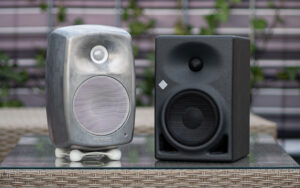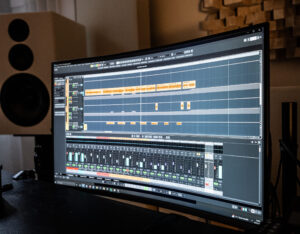A common problem some singers face is that visualizations and tipps they find online about singing lead them into overthinking, and in turn hinder their progress. There is no easy visualisation that will get you to understand the physiological priciples of singing well, without lots of practice, and eventually first hand experience of those principles.
This is not to discourage aspiring singers – quiet the opposite! Don’t worry if you don’t „get“ the visualizations you stumble across. They can range from the most basic to the most absurd approaches, some of which we have listed below. In fact, you will probably understand the meaning in retrospect, once you have discovered the natural way of singing that feels well, by yourself.
Don’t think, just sing
First of all, as a beginner you are probably using your ears too much to sing. A natural habit of most people who are not professional singers yet, is constantly trying to „check and correct”. This will keep you from using the full power and range of your voice freely. Now you might think, „of course I have to use my ears, how else will I hit a note?“ But you will be able to sing more accurately, once you learn focusing on the feeling, rather than the sound of your voice. Instead of what you are hearing, you should slowly shift your focus down towards what you are feeling, especially in your chest and stomach. Feel the vibration of the sound you create rather than hearing it. At first this will be hard to accomplish because it has to do with letting go of what you think is the control over your voice. In reality it will be much easier to intuitively use your voice, once you have learned to utilize the feeling of vibrations in your body without fear.
The following tips appear commonly and are easily misunderstood. Overthinking these aspects can lead to more harm than good:
“Keep your shoulders low”
Once you’ve built up enough strength in your Diapragm, stomach and back muscles, you will naturally increase your ability to relax your shoulders during singing. The instruction to keep your shoulders low is counter-productive for most people, because it will introduce tension and too much focus on the shoulder area, when you are actively trying to hold them down during singing. Your mental focus should always lay in the center of your chest. Instead of concentrating on forming the sound in your mouth, imagine breathing in and talking from your chest.
“Keep your larynx low”
The little cousin of “keep your shoulders low” is to keep your larynx low. The same principle applies than above. By actively trying to lower your larynx during singing, you will create tension instead of relaxation, the exact opposite of what you want. To have a naturally relaxed and „low“ position of your larynx (low is probably a fundamentally wrong description), you will need muscle strength from the base of your tounge.
“Keep your throat open”
You have probably heard somebody tell you to open your voice, or sing with an open throat. This can be very misleading, because this tipp is based on resonance. To achieve resonance it is not your throat you need to open, it are the resonance chambers in your hear and chest. The resonance chamber of your chest are actually your lungs. You can practice to open chest resonance by standing straight with your chest pushed out without curving your back. Try to make yourself tall without streching. Just imagine yourself growing a couple of millimeters, then breathe in with your chest without creating tension. When you sing, try to not let the feeling of resonance kreep up into your troat and head only, but try to keep the vibration as low in your chest as possible.
“Push your belly out”
What this should actually mean, is relax your abs. Relaxed Abs will benefit deep diaphragmatic breathing. In order to achieve the right amount of relaxation you will need a correct body posture, one that doesn’t tighten your abs more than neccessairy.
“Breathe as if you are breathing though a pin hole”
This tipp originates in the feeling of breathing in and out when your tounge position is high enoug. If it is too low, you will struggle to apply the right amount of tension while breathing. This tention created by a high tounge position is neccessairy to generate enough air flow through the vocal cords. By practicing to keep the back of your tounge up high in your mouth, you will develop the feeling of a resistance while breathing out (in a good way), which will help you to completely fill and empty your lungs. The counter part to your diaphragm is your tounge. Keep your chin paralell to the ground try to make yourself larger without using force.
If you take these tips with a grain of salt they might help you visualize the correct way to sing. But remember, singing has to be learnt by repetition, and the correct way to sing will manifest within you by opening up to the vibrations, rather than trying to control your voice.
Book Tip
If you want to read upon the correct way to visualize singing, I highly recommend the Book “The Voice: A spiritual approach to Singing, Speaking and Communicating” by Miriam Jaskierowicz Arman. It is avaliable online and even for free on Google Docs following this Link. The book was first published in 1999 and contains timeless knowledge about mastering the voice. Even though singing has to be learnt by doing, this book is the best on the matter I’ve read so far.


